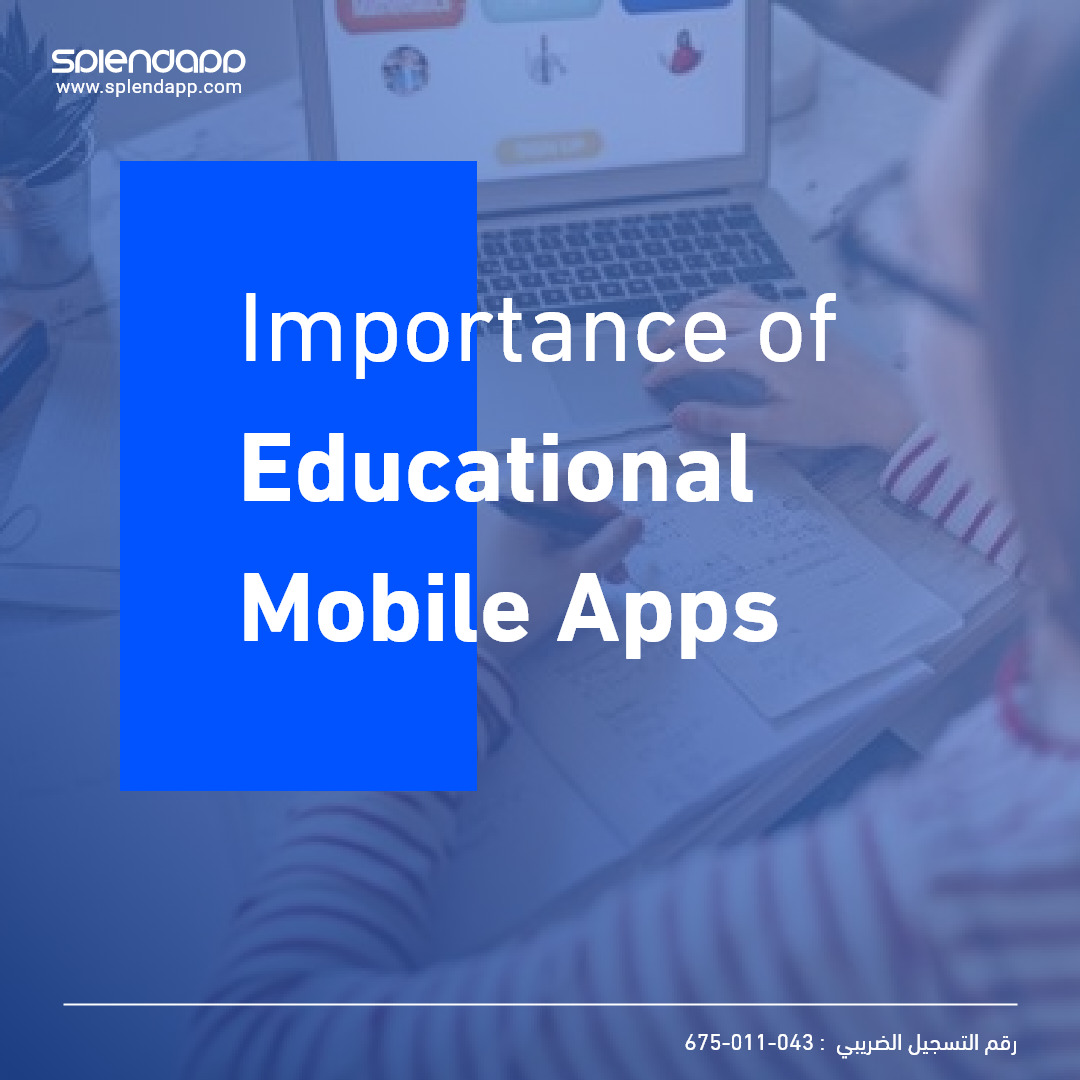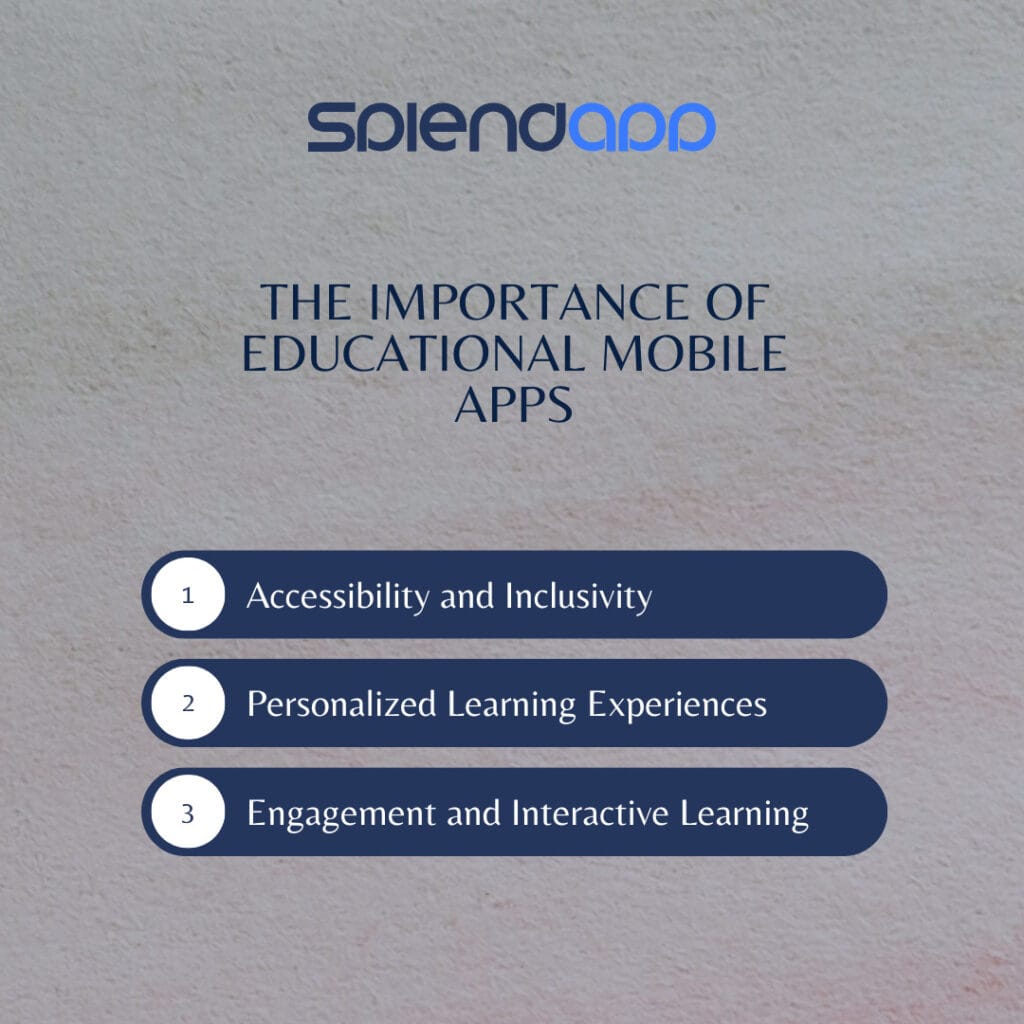

Educational Mobile Apps represent a significant advancement in the realm of learning and teaching, offering a dynamic and accessible platform for students and educators alike. These apps harness the power of technology to provide an interactive and engaging learning experience, transcending traditional classroom boundaries.
In the modern era, where smartphones are a staple in daily life, educational apps leverage this ubiquity to make learning more convenient and flexible. From primary school students to adult learners, these apps cater to a wide array of educational needs, covering various subjects and skills.

Educational mobile apps hold tremendous importance in today’s digital age, fundamentally transforming the way knowledge is acquired and shared. Their significance can be broadly categorized into several key areas:
The aspects of accessibility and inclusivity in educational mobile apps are crucial for several reasons:
Breaking Down Geographical Barriers: Educational apps make learning resources available to anyone with a mobile device and internet connection, reaching learners in remote or underserved areas where access to quality education might be limited.
Catering to Diverse Learning Needs: These apps can accommodate different learning styles and abilities, including provisions for learners with disabilities. Features like adjustable text sizes, audio descriptions, and interactive content make learning more accessible to all.
Supporting Multilingual Content: Many educational apps offer content in multiple languages, which is vital for non-native speakers and promotes language inclusivity.
Economic Accessibility: Mobile apps often provide free or cost-effective alternatives to traditional education, making learning more affordable and reducing the financial barrier to education.
Flexibility for Varied Lifestyles: They are particularly beneficial for people who may not be able to attend traditional schools due to work, family responsibilities, or health issues. The flexibility to learn at one’s own pace and schedule is a key aspect of inclusivity.
Encouraging Lifelong Learning: Educational apps cater not just to school-aged learners but also adults seeking continuous professional development or personal enrichment, fostering a culture of lifelong learning across all age groups.
Promoting Global Learning Communities: These apps can connect learners from different parts of the world, promoting cross-cultural understanding and collaboration, and creating a global learning community.
Addressing Educational Gaps: For regions or groups that lack sufficient educational infrastructure or resources, mobile apps can provide an alternative means to access education, helping to bridge educational gaps.
Personalized learning experiences through educational mobile apps are a cornerstone of modern education, offering several significant benefits:
Customization to Individual Needs: Educational apps can tailor learning content and experiences to individual preferences and abilities. This means lessons can be adapted based on a learner’s strengths, weaknesses, and learning pace, making education more effective and enjoyable.
Adaptive Learning Pathways: These apps often use algorithms to adjust the learning pathway based on a user’s performance. If a learner is struggling with a concept, the app can provide additional resources or practice exercises to help them master it.
Interactive and Engaging Content: Personalized learning also includes using interactive content like games, quizzes, and videos, which can be more engaging for learners compared to traditional textbook methods.
Immediate Feedback: Mobile apps provide instant feedback, allowing learners to understand their mistakes and learn from them in real-time. This immediate response helps to reinforce learning and improve retention.
Self-Paced Learning: Personalization means learners can progress at their own pace. This is particularly beneficial for those who need more time to grasp certain concepts or, conversely, for those who wish to advance faster.
Goal-Oriented Learning: Educational apps can help learners set and achieve personal learning goals, whether it’s mastering a specific skill, preparing for an exam, or learning a new language.
Enhanced Motivation: Personalized learning experiences can boost motivation. When learners see content relevant to their interests and goals, and when they experience success at their own pace, their motivation to continue learning increases.
Data-Driven Insights: Personalization also involves leveraging data analytics to gain insights into a learner’s progress and behavior, which can be used to further refine and improve the learning experience.
Engagement and interactive learning through educational mobile apps play a pivotal role in enhancing the educational experience, offering several key advantages:
Active Learning: Interactive features in educational apps, such as quizzes, puzzles, and simulations, require active participation from learners, leading to better engagement and understanding of the material.
Gamification: Many apps incorporate gamification elements – like points, badges, and leaderboards – to make learning more game-like and enjoyable. This approach can significantly increase motivation and engagement, especially among younger learners.
Multimedia Content: The use of diverse multimedia elements – videos, animations, audio clips, and interactive graphics – caters to various learning styles and keeps learners engaged and interested in the content.
Immediate Interactivity: Interactive learning apps provide instant feedback and interaction, allowing learners to test their understanding immediately and adjust their learning strategies accordingly.
Collaborative Learning: Some apps facilitate collaboration through features like discussion forums, group projects, and peer-to-peer feedback, enhancing the sense of community and shared learning.
Real-World Application: Interactive apps often include simulations and real-world scenarios that allow learners to apply their knowledge in practical settings, making learning more relevant and engaging.
Customized Challenges: These apps can offer challenges and activities tailored to the learner’s level, ensuring that the content is neither too easy (which can lead to boredom) nor too difficult (which might cause frustration).
Encouraging Exploration and Curiosity: Interactive elements in learning apps can stimulate curiosity and encourage learners to explore new topics and ideas, fostering a love of learning.
Accessibility and Inclusiveness: Interactive learning can be particularly beneficial for learners who might struggle with traditional educational methods, including those with learning disabilities, by providing alternative ways to engage with content.
In conclusion, educational mobile apps are reshaping the educational landscape by offering innovative, flexible, and inclusive ways of learning. They play a crucial role in empowering learners of all ages and backgrounds, fostering a culture of continuous, interactive, and accessible education.
You can learn more about The Impact of AI on Mobile Educational Apps from here.